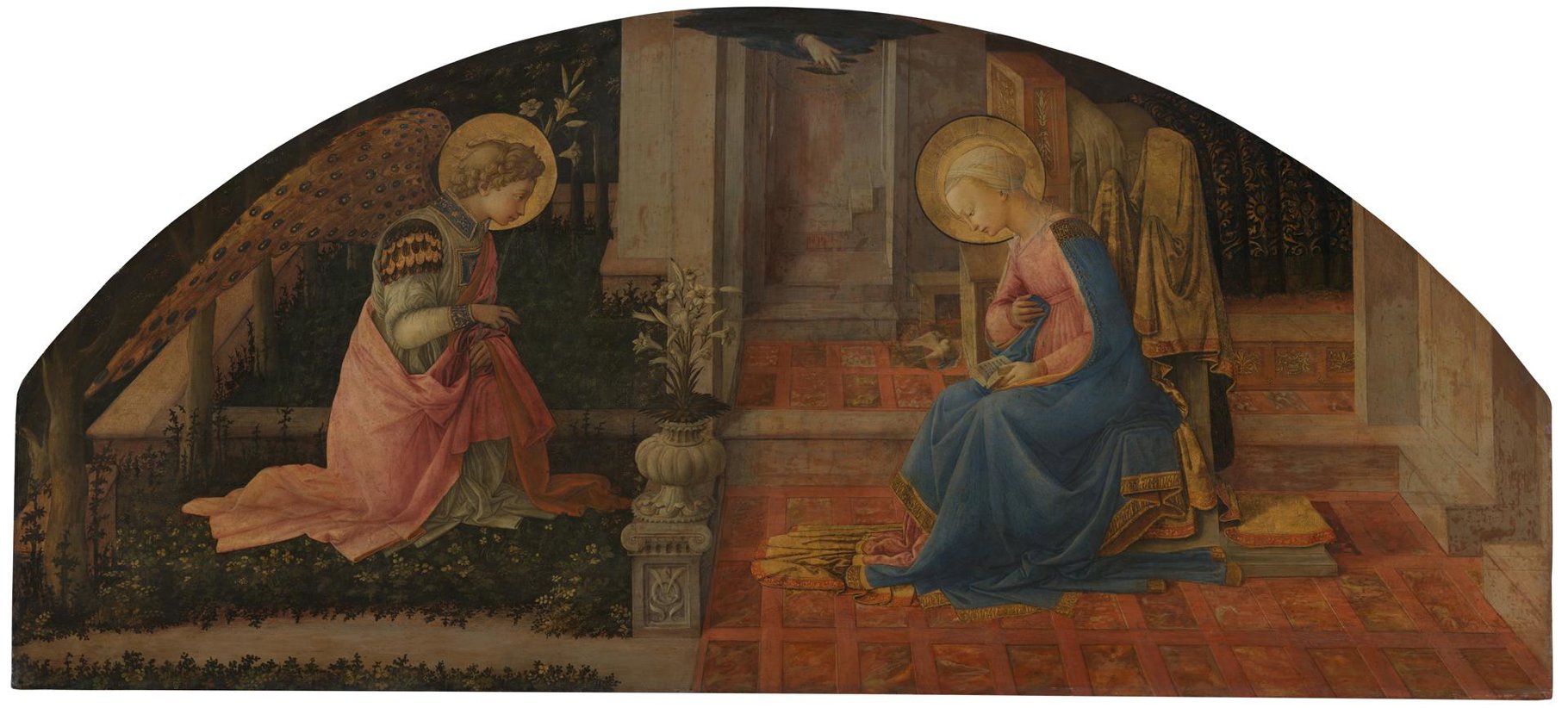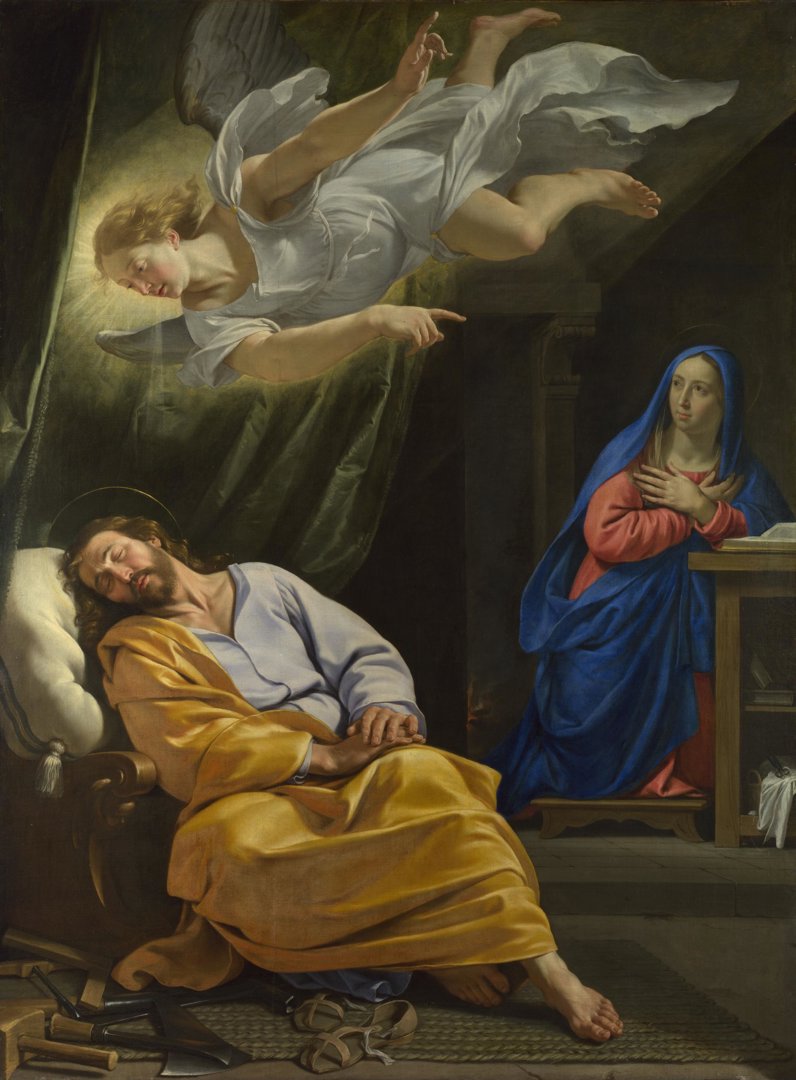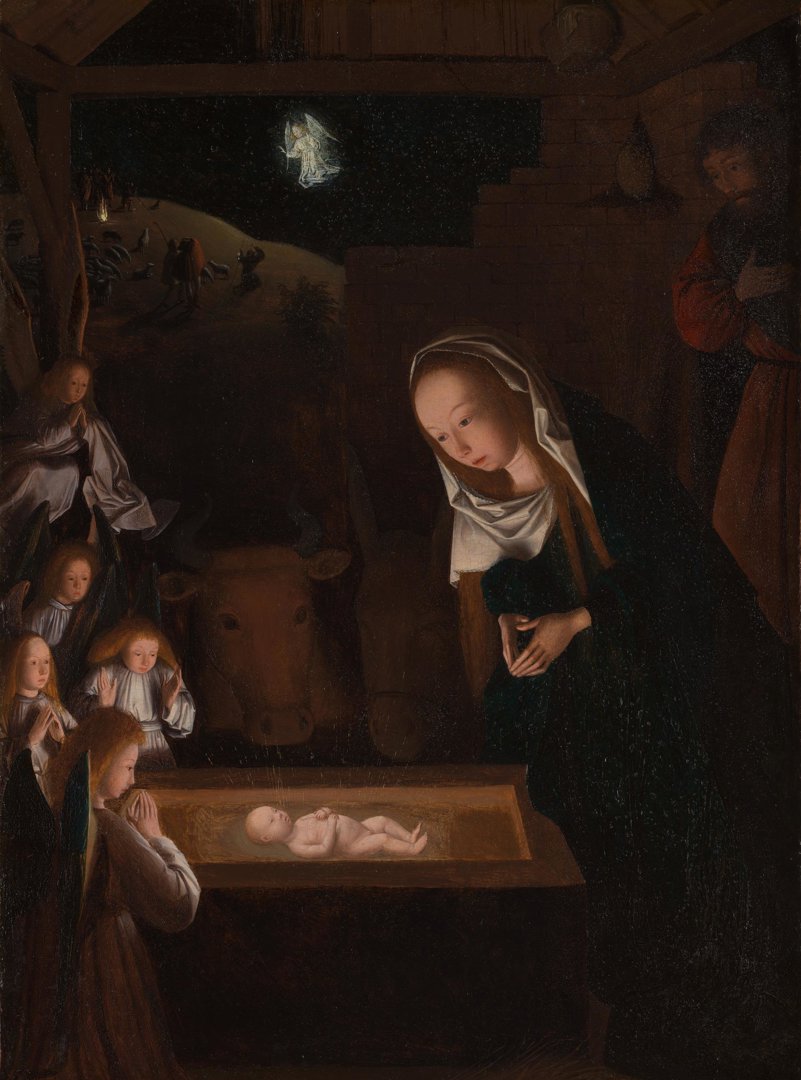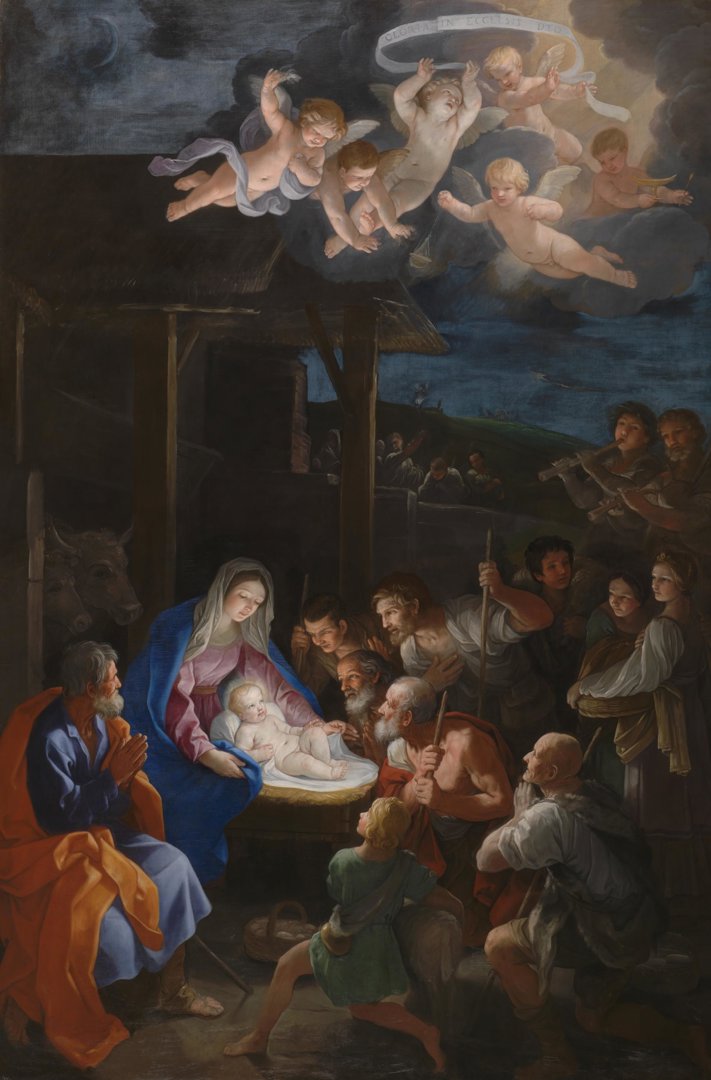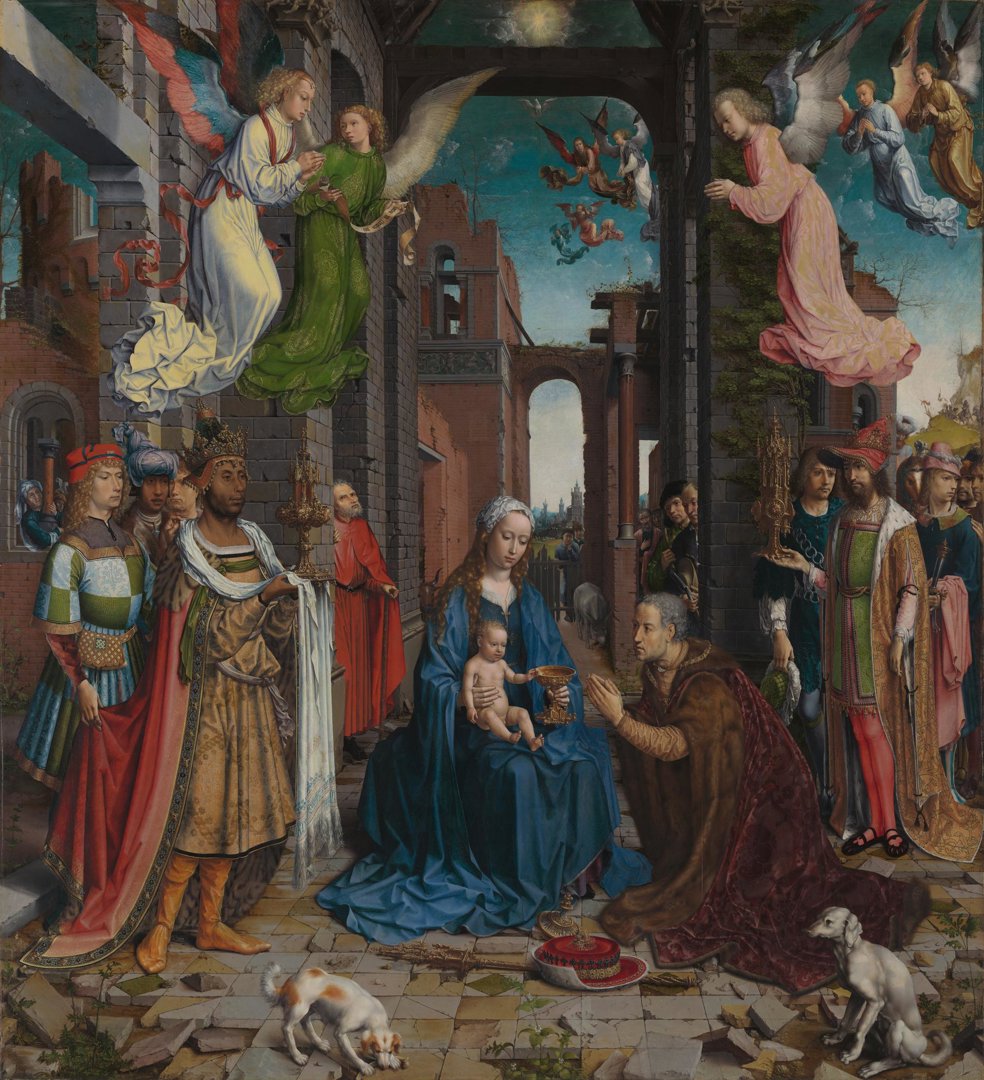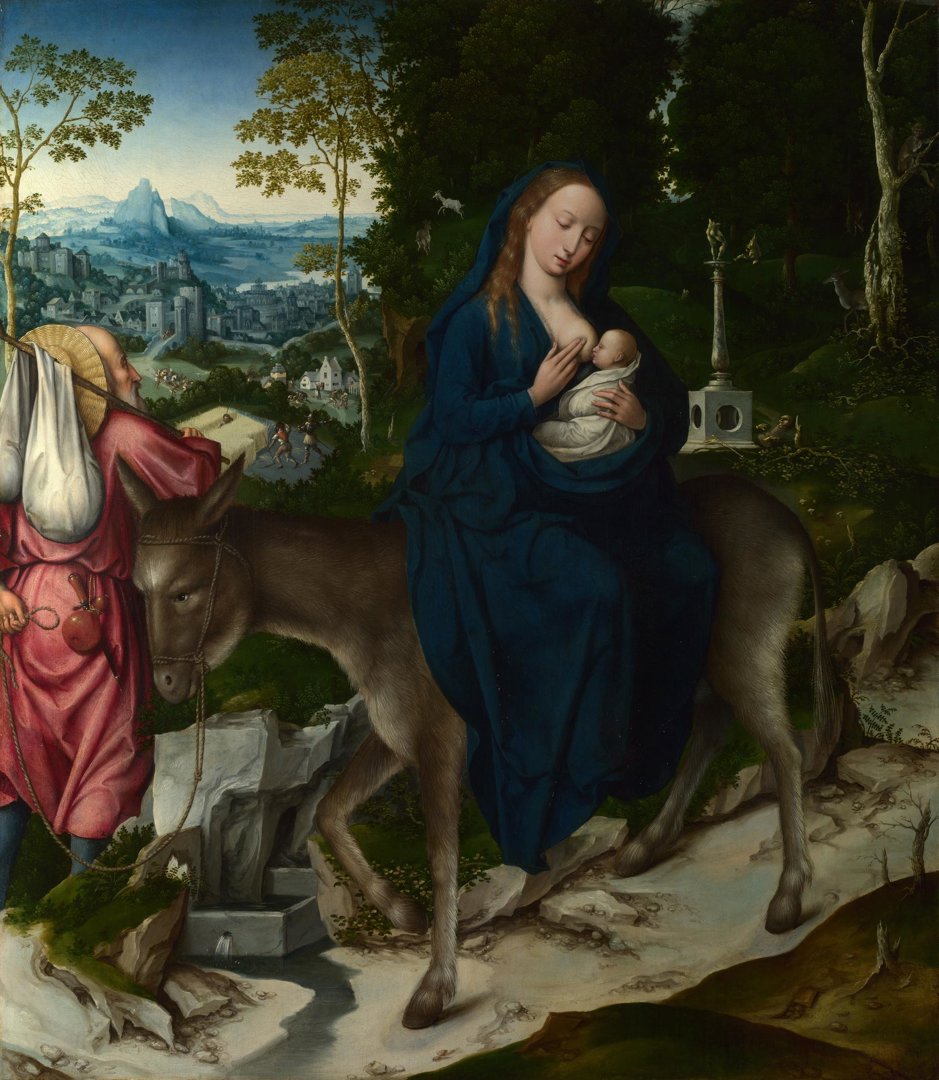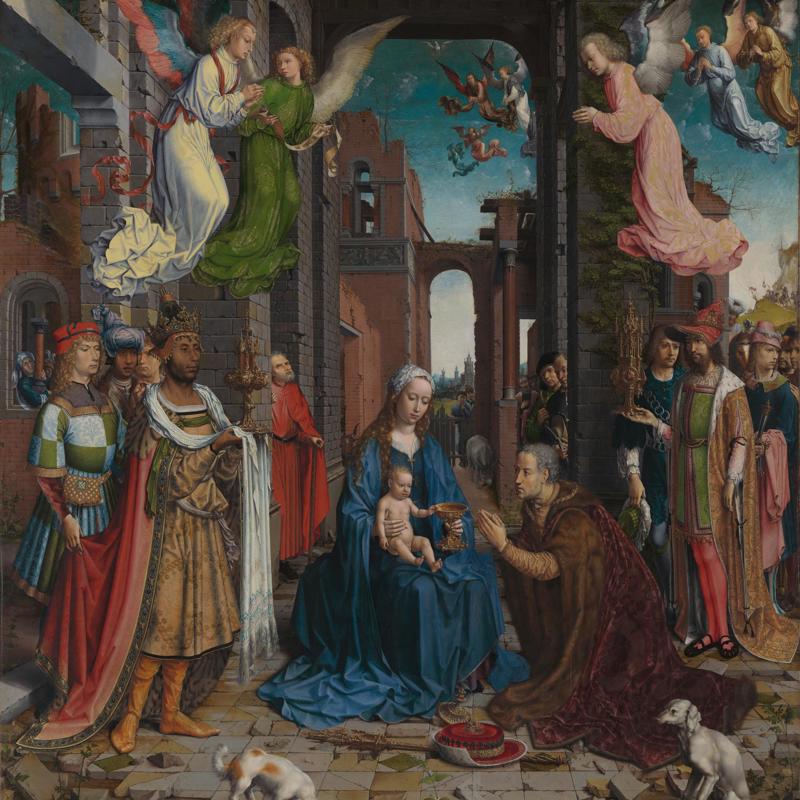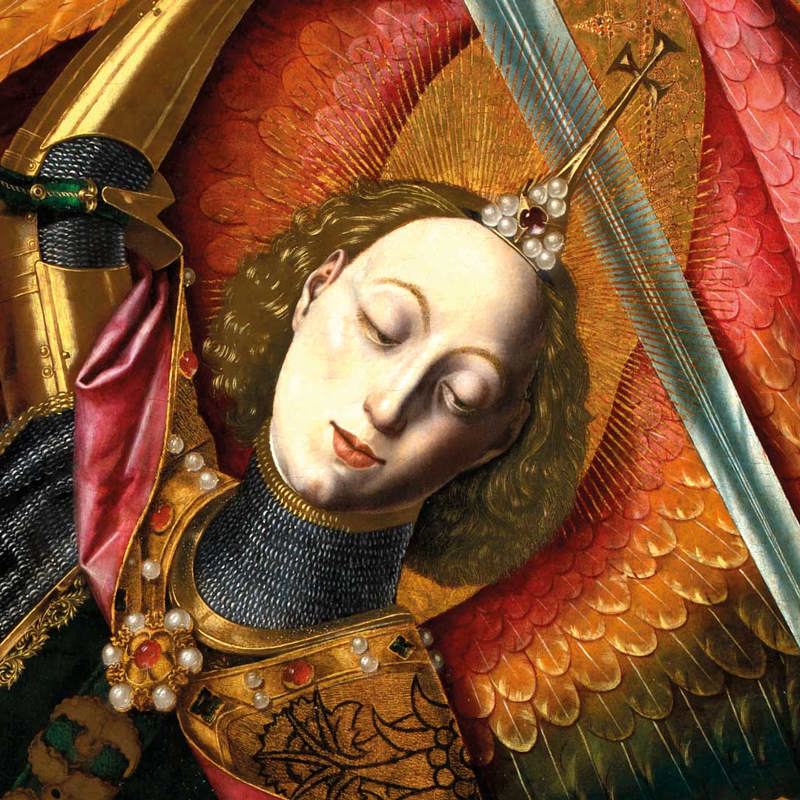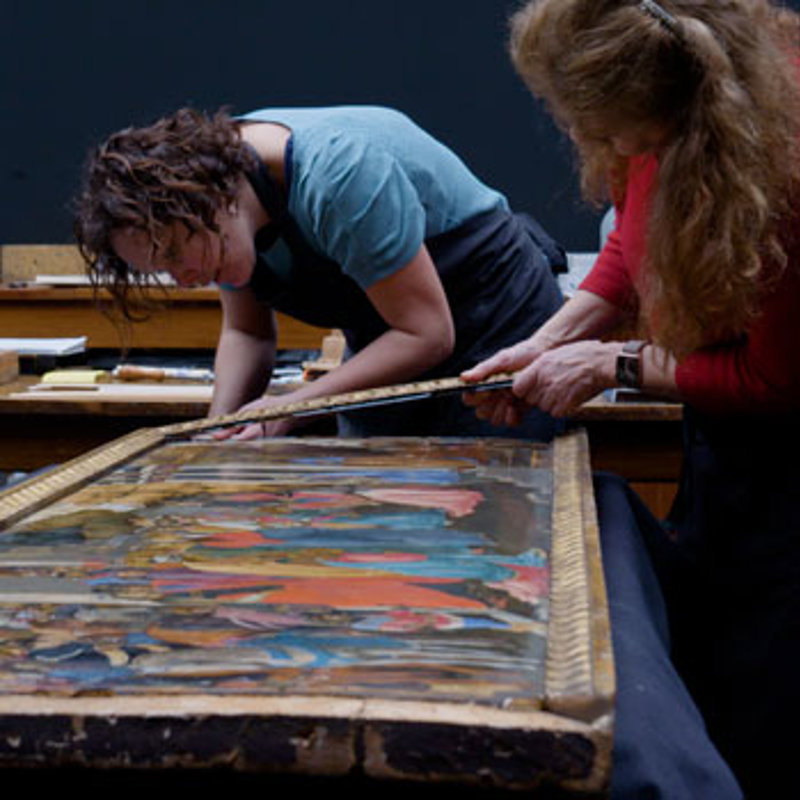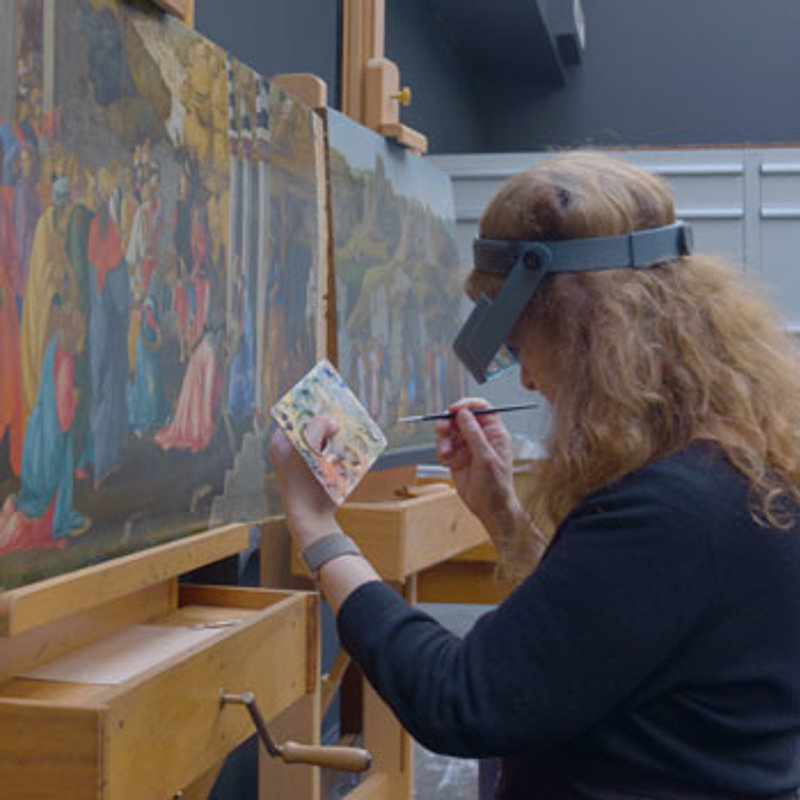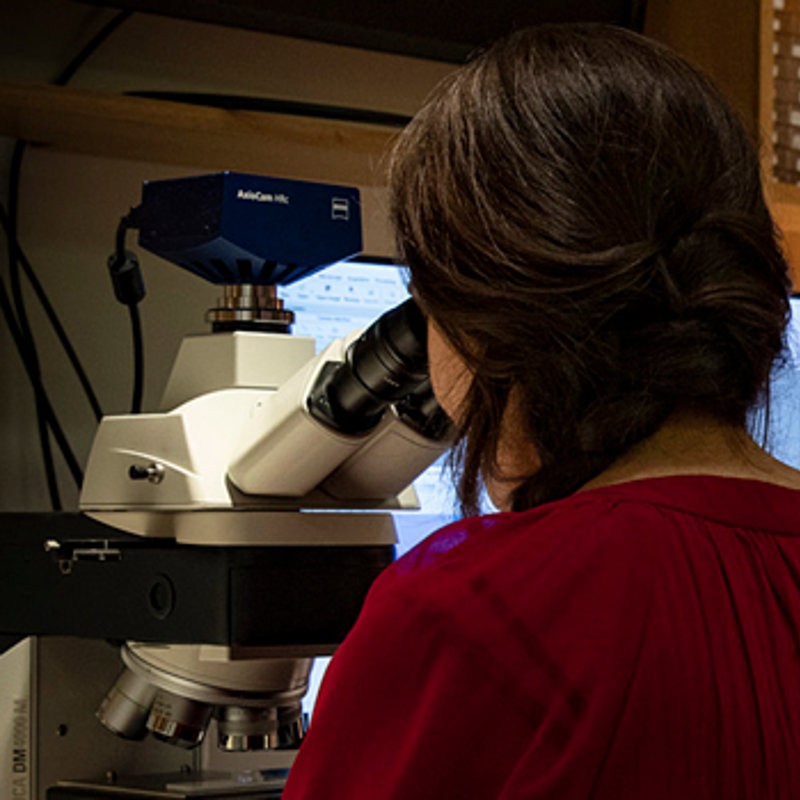The Christmas story has inspired some of the most affectionate, gentle and intimate images in the history of Western art.
They bring to life the story of Christ's birth, 'the Nativity', first told of in the New Testament gospels of Saint Matthew and Saint Luke.
The original Christmas
The Christmas period is the time when Christians celebrate their joy at the birth of Jesus. They believe that his birth fulfilled the Old Testament promise that a Messiah, Christ, would be born.
The story begins with some unexpected news...
The Virgin Mary was visited by the angel Gabriel, sent by God to Nazareth, who told her that she would give birth to Jesus, the son of God.
In Fra Filippo Lippi's beautifully symmetrical depiction of the Annunciation, the angel Gabriel is shown on the left with peacock feather wings. It was traditionally thought that at the moment of Gabriel’s arrival, Mary was reading the prophecy in the Old Testament book of Isaiah that a virgin would give birth to a son.
At the top of the picture the hand of God can be seen sending the Holy Spirit in the form of a dove towards an opening in the front of Mary’s dress. The curved top of the panel indicates that it may have been intended as a furniture painting, or perhaps to be hung above a doorway, probably in a palace owned by the Medici family.
Below the central urn containing lilies, a symbol of Mary’s purity, is a carving of three feathers inside a diamond ring. This was an emblem adopted by several members of the Medici family.
These events must have come as quite a shock for Joseph, thrust into the role of earthly father to the Son of God. Saint Matthew’s gospel describes how he was visited by an angel in a dream who gave him some reassurance.
In Philippe de Champaigne's painting, Joseph is asleep on an elegant armchair, perhaps one he made himself. The tools of his trade as a carpenter are placed at his side and his sandals lie on the woven mat by his feet.
The hefty angel who miraculously stays airborne has been sent by the Lord to reassure Joseph. He tells him that he need not hesitate to take Mary for his wife as the child she has conceived is the Son of God.
The artist deliberately chose a simple composition with blocks of vivid colour so that the painting, which was destined for a dimly lit chapel in the now demolished church of the Minimes in Paris, would be easily seen.
While pregnant with the Christ Child, Mary and her husband Joseph travelled to Bethlehem to pay taxes, which the Emperor Caesar Augustus had declared that all citizens must pay. Once in Bethlehem, Mary gave birth to her son in a shelter for animals and used their manger for a bed because there was no room left at the inn.
In this small devotional painting Geertgen tot Sint Jans (‘little Gerard of the Brethren of Saint John’) does not show the baby in traditional swaddling clothes. Instead, the tiny naked child exudes rays of supernatural light which illuminate the night-time scene, one of the first realistically painted night scenes in Northern art.
It is so dark that we can barely make out Joseph standing behind to the right, or the faces of the ox and ass as they too look into the manger at the unexpected contents. The light emanating from the Christ Child lights up the faces of the little angels and emphasises their wonderment at his miraculous birth.
News of Christ’s birth spread fast and it was not long before the first visitors arrived.
Shepherds had been keeping watch over their flocks at night when the angel of the Lord brought them news that Christ had been born.
In this painting we see the shepherds, young and old, crowding around the baby. A host of angels bear a scroll with the words they sang to the shepherds to announce the birth – Gloria In Eccelsis Deo (Glory to God in the Highest).
Humble shepherds were not the only visitors who travelled to see the special baby.
Wise men came from the East to Jerusalem, following a star. The star, positioned at the top of the painting directly above the Christ Child and the dove of the Holy Spirit, is also a symbol of God the Father.
In this painting, Gossaert shows the three men presenting their gifts. Their luxurious clothes contrast with the surrounding ruins. This was a common setting for paintings of this subject symbolising the collapse of the old pagan order and the beginning of Christianity.
Gold, frankincense and myrrh
The wise men brought gold, frankincense and myrrh, a fragrant resin used to embalm the dead and a symbol of Christ’s future sacrifice. Caspar kneels before the Virgin presenting gold coins in a chalice. Melchior stands behind him and Balthazar, the Moorish King, stands on the left.
The wise men had been sent by King Herod to find the newborn ‘King of the Jews’ and to report his whereabouts under the pretence that Herod wanted to go and worship the child. Fortunately God warned the wise men in a dream not to return to evil King Herod and they departed another way.
After the wise men departed, the angel of the Lord returned to Joseph in a dream. He revealed Herod’s wicked plan to seek out the young child and kill him because Herod saw the child heralded as the new ‘King’ and a rival to his throne.
In this painting of the Flight into Egypt, Joseph is shown following the angel’s advice. In the background we see the head and torso of an old pagan statue falling to the ground, referring to the legend that statues of pagan idols crumbled as the holy family, representing a new religious era, passed.
Massacre of the innocents
Near the small houses in the background a more horrific breaking of real bodies is about to take place, the massacre of the innocents, a slaughter ordered by King Herod of all children under the age of two. We see the young children being taken from their distraught parents.
Herod had hoped in this way to ensure that the baby Jesus would be killed. Fortunately the child remains safe, cradled in the arms of Mary who suckles him, while Joseph, with provisions and a straw hat where a halo might be, leads his family to safety.


